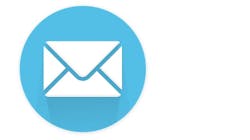Email Marketing—Just One Part of the Follow-Up Process
If you’ve heard the term drip marketing, you know that it’s a communication strategy that sends, or “drips,” a prewritten set of messages to prospects over time. These messages often take the form of email marketing.
My partners and I at Do You Convert are huge proponents of this type of sales and marketing automation because it makes the task of marketing so much easier and more efficient. If you only relied on your memory to compose emails one by one and send them out, it would happen intermittently at best.
However, we’ve seen some confusion when it comes to proper execution. Drip marketing doesn’t amount to your entire follow-up process; it’s just one component of the big picture. If you leave follow-up solely to the automated system, you’re making a tragic mistake. You need a systematic and continuous strategy. With the right planning and training to execute it, the result will be a system that better supports your nurturing of leads. But here’s the key: To make your system work, it’s crucial to go well beyond automation and plug in the human aspect to create a complete follow-up picture. Drip marketing won’t personally respond to a prospect or dial the phone.
So, let’s dive in here.
Avoid Automated Emails
Your sales prospects can smell automated email templates a mile away. If they open up your email and it looks like a form letter or template, they’ll probably ignore it. If you can’t take the time to reach out in a personal manner, why would you expect them to respond in kind?
Email marketing has its place—just not as the only method of communication. That beautiful email marketing blast you designed should be thought of as the 2016 version of a direct-mail piece. Focus your efforts on getting recipients to open and read it, and to then click through and spend time on your website. Remember, it’s rare to get an actual response from the prospect from this email. Your goal at this point is to drive traffic to your website. The bonus, with the right CRM, is that you’ll now start tracking the behavior of this prospect. You’ll receive a notification that they’re visiting your website. It’s invaluable info, especially when you get it in real time.
RELATED
- Need More Leads? Think Again (It's All About Conversion)
- Here's How Builders Can Improve Lead Follow-Up
Make It Personal
Email messages that come from a human get responses from humans. That doesn’t mean someone has to write a new message every time, but the email template needs to look like it came from your email account. In our experience, shorter, text-only emails work best for encouraging engagement. Use what we call the “five-sentence rule”: Make sure your message doesn’t exceed five sentences in total. Why? People don’t read email; they scan or just quickly skim through. So keep your message succinct and use your words wisely.
Don’t Make Prospects Think Too Hard
Your email should include an easy way for the person to whom it was sent to respond. If the recipient has to work too hard, they just won’t answer. You don’t have to accomplish everything in one email; limit the questions to one or two. With the combination of follow-up and drip marketing, you’re using a more layered approach that will, in the end, be more effective. The beauty is that you can ask another question in a few days, building on your message as you go. Your Day Seven follow-up email might include something like, “How is your home search going?” or “Do you have any questions I can answer for you?”
Pick Up the Phone
Follow-up should involve a variety of modes of communication. Solely relying on email will limit your results. Customers actually expect a phone call, yet eight out of 10 times sales executives won’t call a lead, according to a Lead Response Survey conducted by Lasso and Do You Convert. If the prospect has given you a phone number, don’t be afraid to use it. Why? Only half of emails sent are actually opened. Sometimes a prospect needs to hear from you to remind him or her to check email. More than half of the time, you’ll get the prospect’s voice mail. That’s OK. Use that opportunity to leave a powerful, punchy message that works in tandem with the email follow-up. Research by digital marketing companies Silverpop and DemandGen tells us that this style of lead nurturing email gets four to 10 times the response rate that standalone email blasts do.
Don’t Be Shy About Following Up
Many sales professionals worry too much about annoying their prospects. They think, “I’m calling too much,” or “Do they really want another email from me?”
The short answer is yes. Your sales prospects want to hear from a real person. Remember, they filled out a form, signed up for email blasts, or have in some way requested more information. They’ve given you permission to be persistent. In fact, they will be offended if you don’t follow up because it means you’re dismissing them.
Take Action
Remember: Email marketing and “drip marketing” campaigns shouldn’t replace follow-up; they work together. To win more prospects and convert more leads:
• Be responsive
• Be personal
• Be persistent
• Be effective
These steps are your competitive advantage because your competition likely isn’t following them. That’s why, in my previous article in February, “Going the Distance With Sales Leads,” we saw that, in both quantity and quality of follow-up, our industry is doing a pretty miserable job. Effective follow-up is straightforward but it’s not easy. In a buyer-driven world, it’s essential that you use a multimedia layered approach to increase conversions and create more sales.
About the Author

Mike Lyon
Mike Lyon is president of Do You Convert, a company exclusively focused on online sales and marketing for home builders and developers. Write him at [email protected].
